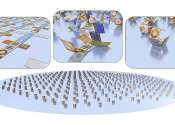A method to produce hydrogen in vivo photosynthetically
Researchers have been trying to produce hydrogen photosynthetically for quite some time now, as this could pave the way toward a more sustainable energy infrastructure. Some of them have succeeded by fusing different hydrogenases ...









